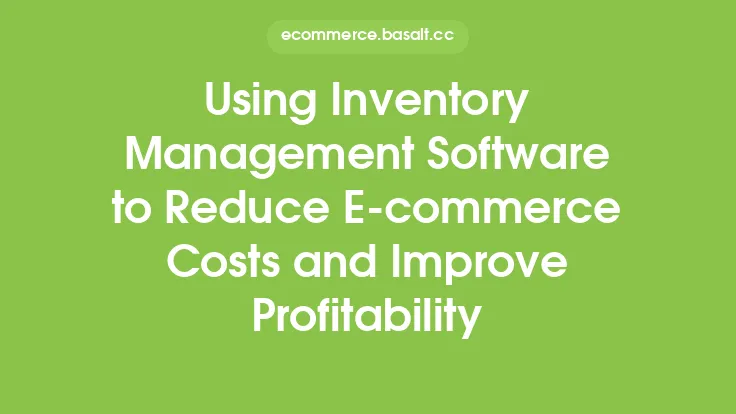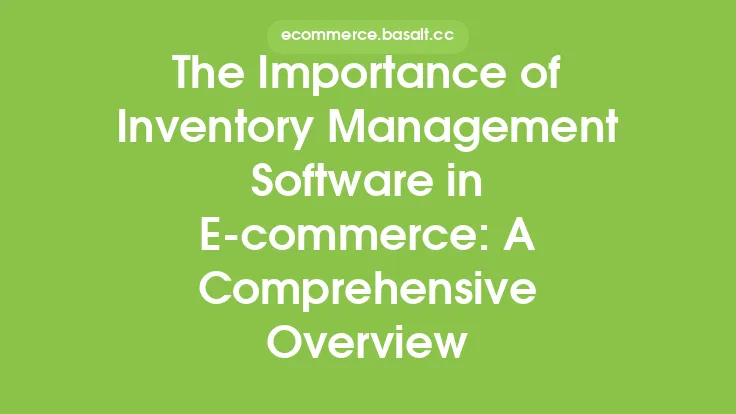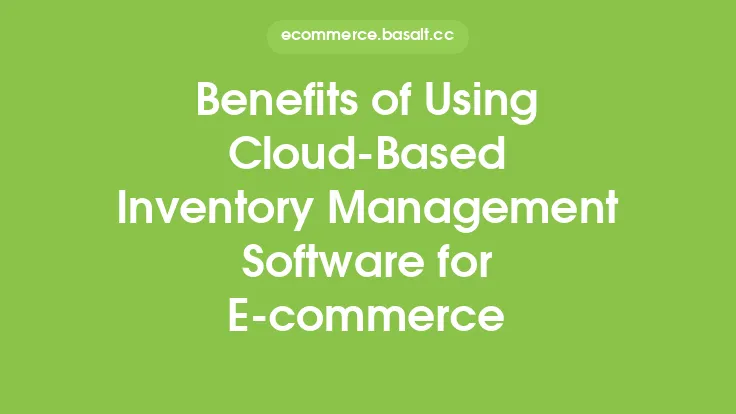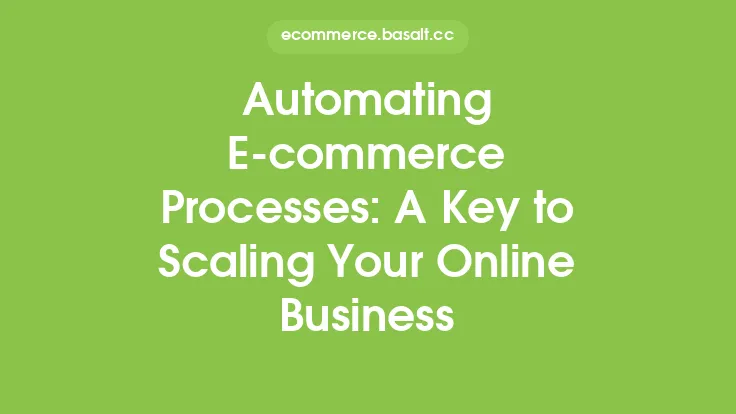In today's fast-paced e-commerce landscape, effective inventory management is crucial for businesses to stay competitive and profitable. As online sales continue to grow, managing inventory levels, tracking stock movements, and optimizing supply chains have become increasingly complex tasks. This is where inventory management software comes into play, providing a robust solution to streamline e-commerce operations and improve overall efficiency. Inventory management software is designed to help businesses monitor and control their inventory levels, track stock movements, and automate various tasks, such as ordering and reporting.
What is Inventory Management Software?
Inventory management software is a type of application that enables businesses to track and manage their inventory levels, monitor stock movements, and optimize supply chains. It provides a centralized platform for managing inventory across multiple channels, including online marketplaces, physical stores, and warehouses. The software typically includes features such as inventory tracking, automated reporting, low-stock alerts, and order management, making it an essential tool for e-commerce businesses of all sizes. By using inventory management software, businesses can reduce errors, improve accuracy, and make data-driven decisions to drive growth and profitability.
Key Benefits of Inventory Management Software
The benefits of using inventory management software are numerous and well-documented. Some of the key advantages include improved inventory accuracy, reduced stockouts and overstocking, enhanced supply chain visibility, and increased efficiency. By automating tasks such as inventory tracking and reporting, businesses can free up staff to focus on more strategic activities, such as marketing and customer service. Additionally, inventory management software can help businesses to identify trends and patterns in their inventory levels, enabling them to make informed decisions about pricing, promotions, and product development. Overall, the use of inventory management software can have a significant impact on a business's bottom line, leading to increased revenue, reduced costs, and improved profitability.
How Inventory Management Software Works
Inventory management software typically works by integrating with a business's existing e-commerce platform, such as Shopify or Magento, and connecting to various data sources, including warehouses, suppliers, and shipping providers. The software then uses this data to provide a real-time view of inventory levels, track stock movements, and automate tasks such as ordering and reporting. Many inventory management software solutions also include advanced features, such as predictive analytics and machine learning algorithms, which can help businesses to forecast demand, optimize inventory levels, and identify potential supply chain disruptions. By providing a centralized platform for managing inventory, businesses can gain greater visibility and control over their supply chains, enabling them to respond quickly to changes in demand and stay ahead of the competition.
Types of Inventory Management Software
There are several types of inventory management software available, each with its own unique features and functionalities. Some of the most common types include cloud-based inventory management software, on-premise inventory management software, and hybrid inventory management software. Cloud-based inventory management software is hosted in the cloud and can be accessed from anywhere, making it a popular choice for businesses with multiple locations or remote workers. On-premise inventory management software, on the other hand, is hosted on a business's own servers and provides greater control and security. Hybrid inventory management software combines the benefits of both cloud-based and on-premise solutions, providing a flexible and scalable solution for businesses of all sizes.
Implementation and Integration
Implementing and integrating inventory management software can be a complex process, requiring significant time and resources. However, with the right approach and support, businesses can quickly realize the benefits of using inventory management software. The first step is to assess the business's current inventory management processes and identify areas for improvement. Next, the business should select an inventory management software solution that meets its specific needs and requirements. The software should then be integrated with the business's existing e-commerce platform and data sources, and staff should be trained on how to use the new system. Finally, the business should monitor and evaluate the effectiveness of the inventory management software, making adjustments and improvements as needed.
Future of Inventory Management Software
The future of inventory management software is exciting and rapidly evolving. As technology continues to advance, we can expect to see even more innovative features and functionalities, such as artificial intelligence, blockchain, and the Internet of Things (IoT). These technologies will enable businesses to gain even greater visibility and control over their supply chains, optimize inventory levels, and improve customer satisfaction. Additionally, the increasing adoption of cloud-based and mobile inventory management software solutions will provide businesses with greater flexibility and scalability, enabling them to respond quickly to changes in demand and stay ahead of the competition. As the e-commerce landscape continues to grow and evolve, the importance of effective inventory management will only continue to increase, making inventory management software an essential tool for businesses of all sizes.




